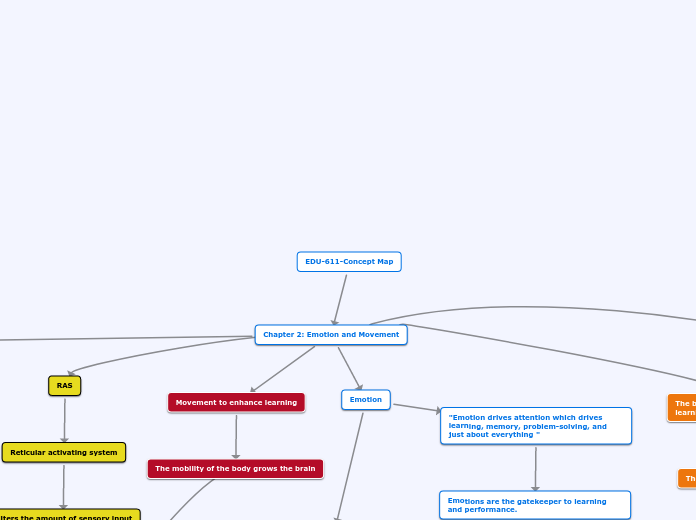a stephanie Brinley 5 éve
202
EDU-611-Concept Map
The intricate relationship between the body and brain forms a crucial foundation for learning, where the body's environment significantly impacts this partnership. The reticular activating system (

a stephanie Brinley 5 éve
202

Még több ilyen
Stress improves learning for males but impairs learning for females.
Filters the amount of sensory input
Movement is the fundamental existence of a brain.
Movement is crucial to ever brain function such as memory, planning and executing plans, and emotions.
The amount of movement needed differs in genders. This mostly has to do with the retinas for each gender and how they see movement.
"The prefrontal cortex acts as the CEO of the brain"
When students are having anxiety or a real feeling of fear, the amygdala may begin its automatic response and hijack the brain.
Remember that when students are having anxiety they are unable to retrieve the information they need in order to answer a question. Remind them to breathe so their hippocampus is able to retrieve the info.
Two essential aspects within the classroom are absent of threat and the creation of a sense of community in order for students to be able to learn.
Full sensory input from "being there" experiences allows students to look for novel solutions and take in sensory data from many sources.
Emotions are the gatekeeper to learning and performance.
Emotions are a function of the entire body-brain.
Emotions filter incoming sensory input which then determines what the cerebral cortex attends to, how it is processed and then stored into long term memory.